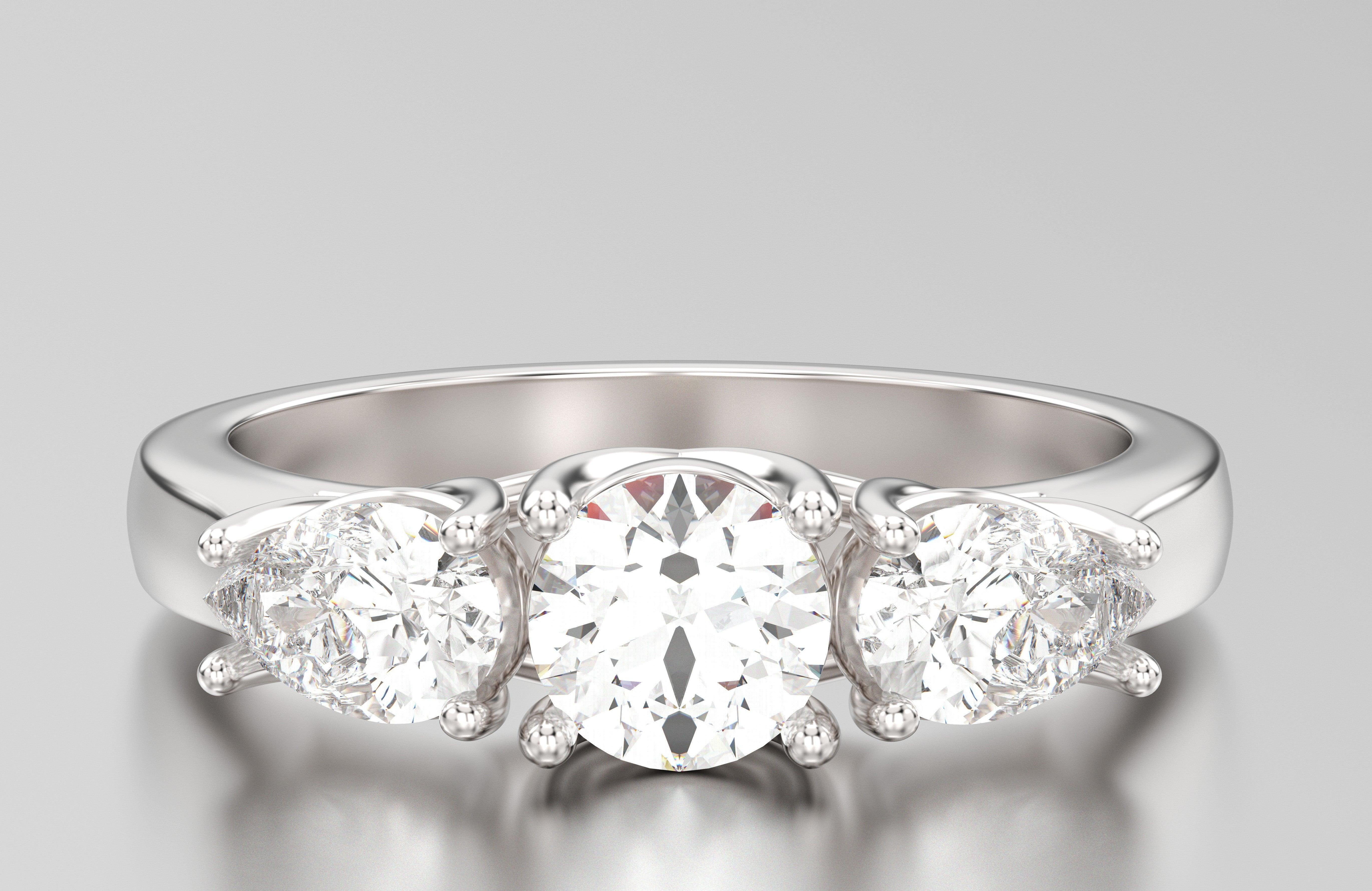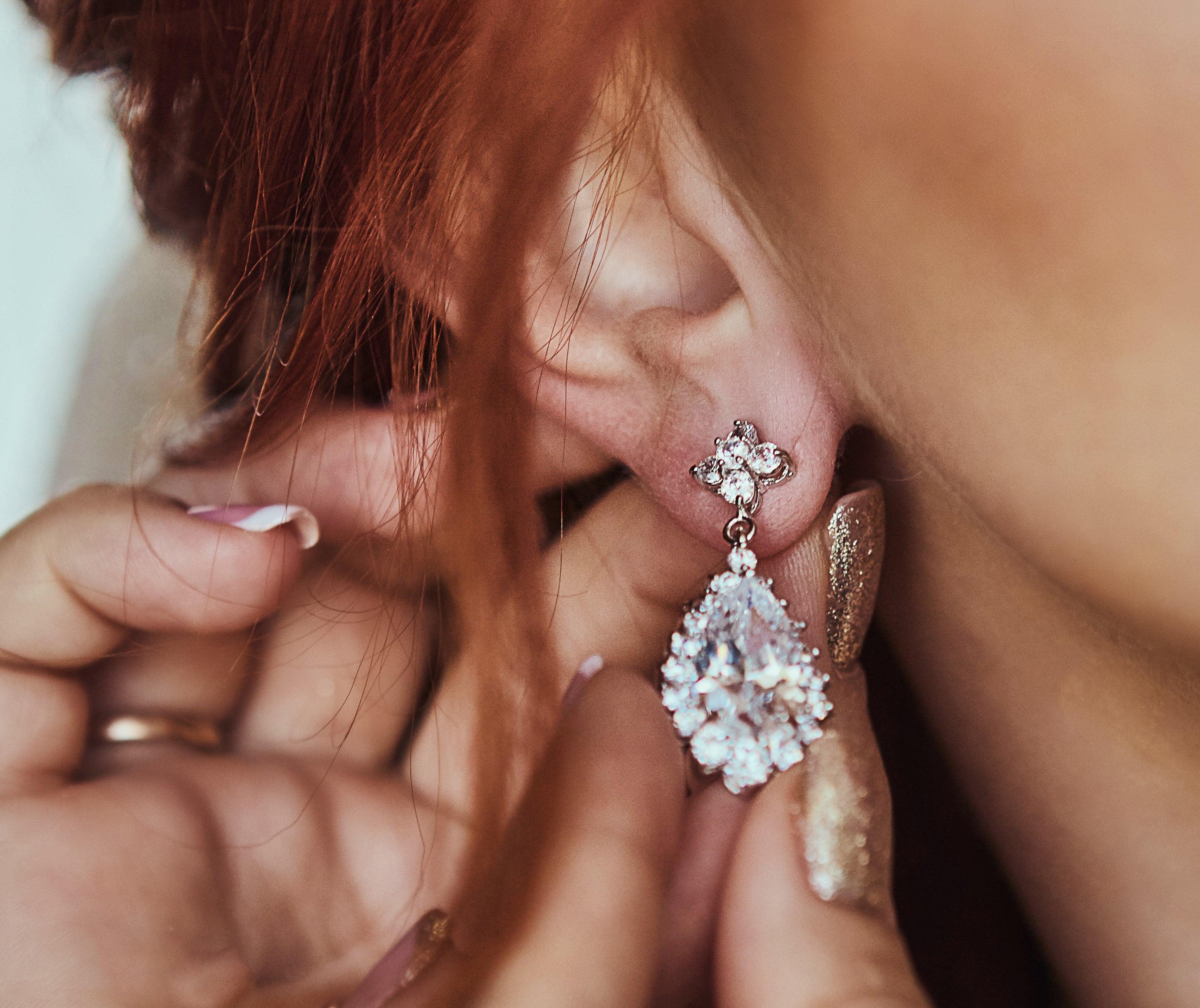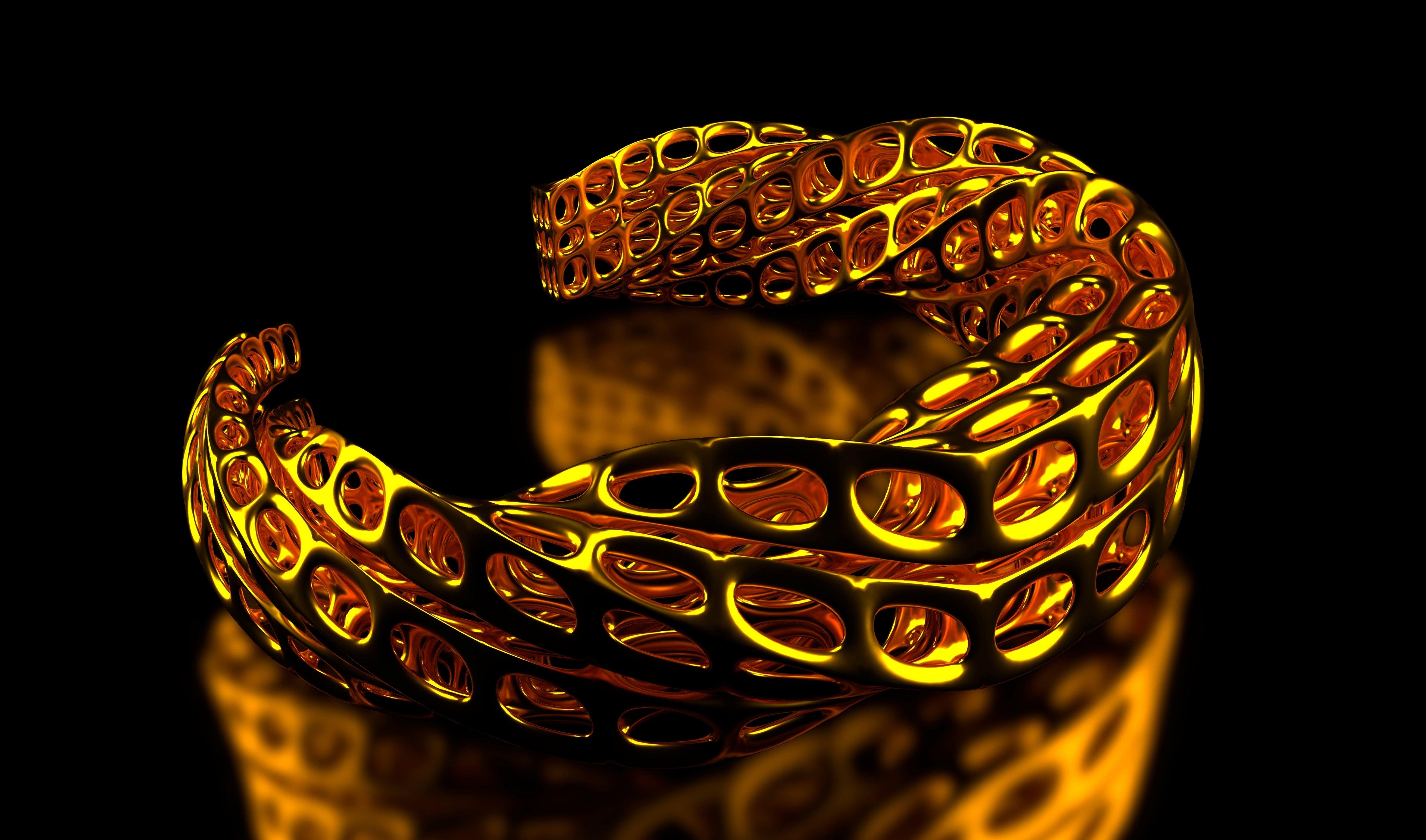
Can Sustainable Engagement Rings Make a Difference?
Are you looking for a sustainable engagement ring? Are you concerned with where your jewelry comes from and how it's made? Most jewelry on the market today is not sustainable, and a sizeable amount still comes from conflict zones. But there is more and more out there that is sustainable. This blog will cover how it's made and where to find it.
Why Buy Sustainable Engagement Rings?
Sustainability can improve our experience of life, from relationships to the rings we wear to celebrate them.
Today we live in a world at risk, largely because of how we treat it. The growing consciousness of the effect our actions and decisions have on the health of our home, Planet Earth, demands ways to live and love without sacrificing our celestial habitat or our comfort in it. More and more we are looking for sustainability in everything possible. Today counting carbon is becoming more popular than counting calories.
Even though there are now more and more retailers and producers who are trying to maintain a sustainable inventory, that's not the case with the vast majority of jewelry you will find for sale.
Moreover, not only is sustainability an ecological problem but it is also an ethical problem. Conflict still drives and is driven by the sale of precious stones and metals all over the world.
Some steps have been taken by regulating authorities to stem the tide of conflict-derived metals and gems to market and to lessen the jewelry industry's environmental impact. But by far the most important and impactful effort made is by consumers, who put their money on sustainable jewelry and thereby voice their vote for responsible business.
So can your single purchase of a sustainable engagement ring save the world? Not quite, but added together with all the thousands of others, it can certainly make a difference.
What makes jewelry unsustainable?

Even today, many of the world's mineral resources are mined in conflict zones, to support conflict, or use violence or oppressive actions to obtain labor, which may also be child labor.
Many of you reading this blog will be familiar with the term “blood diamond,” and perhaps some of you even know of the Kimberly Process. That system was devised in 2003 as the first major global attempt to staunch the flow of conflict diamonds to the market.
It was a good idea, and to a certain extent, it still is, but there is a catch. The Kimberly Process defines a conflict diamond as a “Rough diamond mined in an area controlled by insurgent forces whose sale is used to finance anti-government military action.” It does not go farther than that. So the Kimberly Process is not enough to stop governments and non-state actors from selling diamonds on the market to finance many other conflicts. You can see why over time this has become more and more of an issue. Right now much more than %30 of the market of mined diamonds originates in places that are either conflict zones or countries in conflict, which may use the sale of diamonds for financial support, and the existence of diamonds as leverage for financial, political, or other support.
Environmental damage

Responsible artisanal mining and prospecting does little more damage to a landscape than occasional extreme weather, and puts healthy employment in the hands of many, for hundreds or even thousands of years. For example, the famed Indian diamond mines of Golconda were harvested by hand for almost or more than two millennia. However, that accounts for less than %20 of the mining activity that brings precious stones and metals to market today. The rest happens in massive industrial operations. While these operations do often produce many jobs, they are temporary employment. When they leave, the local workforce is left not only unemployed but with a changed and damaged home; often a land ruined for years and unable to produce. So ultimately many mining operations destroy communities, even while holding them up.

To be economically feasible a diamond mine must produce enough precious material per ton (2000 lb) of rock or earth ore. It can take up to 250 tons of earth to produce one single carat of diamond. Gold mines may move as much as 91 tons of earth for a single ounce of gold. Many of these mines produce millions of carats and ounces of precious material every year, leaving gaping holes in the earth.

Moving that much earth can destroy large portions or whole ecological systems. Industrial mining operations require enormous amounts of energy, water, and chemicals, some of them particularly noxious, to obtain, process, and ship the precious results. More than 120 gallons of water may be needed to obtain a single carat of diamond. Some gold mines use more than 26 million gallons of water a day. That's about 40 Olympic-sized swimming pools. Every single day, for years. And most of that water is turned to waste. In some places, this completely depletes local water sources or damages them beyond repair.
Just look at the communities in Appalachia and the mid-west which have been dying from acid mine drainage as the defunct mines around them secrete toxic acids into the water table. Ruins are all that’s left of once thriving villages in South Africa where mining has drained too much water. 
The UN has been aware of this problem, and the United Nations Convention to Combat Desertification (UNCCD): states “desertification is land degradation in arid, semi-arid and dry sub-humid areas resulting from various factors, including climatic fluctuations and human activities,” highlighting that human activity has caused extensive damage, in many places more than natural activity.
Energy Usage

The energy expended to mine and process precious metals and gems can be enormous. 132 Terawatt Hours of energy, largely derived from fossil fuels, is used every year in recent years to mine gold around the world. To give you an idea of that amount of power, the city of New York, with Times Square- one of the largest concentrations of artificial lights in a single location in the world (on most days)- uses about 50 TWh in a given year. (For sake of the other side of the scale, Bitcoin mining uses about 142 TWh worth of energy every year, and that number is rising.)
What a waste…
Sadly, many of these precious metals and resources go into the production of technology and end up in landfills later on. Though some propose to take advantage of this situation- more on that below.
Today, even with many advancements in efficiency and regulations, the precious metal and diamond industries have sometimes been nauseatingly decrepit in their treatment of - basically- everyone, from the environment to workers, to their own customers and even lawmaking bodies. It's no wonder that many people today, concerned about the impact they make on the world, question what went into the jewelry they're buying, especially when it may be a significant expense, like a diamond engagement ring.
What is sustainable jewelry?
So what makes a ring sustainable? At Michael Gabriels, we would answer that a sustainable ring is one made from materials and using a process that does not harm people, the environment, or the economy; which we can reproduce ad Infinitum.
Reduce, Reuse, Recycled Metals

Precious metal waste comes largely from the electronics and computer industry which pollutes the world with over $10bn worth of precious metal scrap waste every year. Besides being a more efficient method of obtaining precious metals than mining, recycling this waste and other precious scrap waste prevents it, and other associated waste, from being dumped in landfills and waterways and causing not only environmental damage but also, because they are harmful pollutants, environmentally associated health problems. In the United States, we already eat ounces and ounces of microplastic every year. Plastics do not bio-degrade, they only break down into smaller and smaller pieces. These eventually almost microscopic particles of plastic are found in the foods and drinks we consume, eroded off of packaging, and from the polluted soils it grew or grazed on, or the polluted water it lived in.

James Tour, a chemist from RICE laboratories, interviewed last year in several publications, explained that based on the amount of waste we have thus far produced and continue to produce, there should be no need in the future to mine precious metals in faraway places and deep dark holes in the earth. Those precious metals are sitting by the megaton in almost every landfill in the world, waiting for us to recycle and refine them safely.
So at Michael Gabriels we decided the time was ripe for just that and now use exclusively recycled materials. Our rings represent electronic equipment that is not sitting around, decaying into your local watershed (that you probably drink from), is not becoming unfortunate fish food (that you might eventually eat), and is not causing harmful erosion and habitat loss, like all the trash in your street clogging up both your gutters and your local pond- the one you would like to be able to let your kids swim in, if only it was safe and clean.
Avoiding Conflict Metals
According to the language in the Dodd-Frank act, passed in 2010 (and unaffected by the subsequent passage of the Economic Growth, Regulatory Relief and Consumer Protection Act, which curtailed many regulations of the original DFA), the SEC has the power to regulate certain metals, including gold, to prevent the use of conflict metals. Many independent producers go further, including the ones that Michael Gabriels and its expert craftspeople and professional artisans use, self-regulating to prevent not only the use of conflict metals but also to use and promote more eco-friendly precious metals, via auditing from internationally recognized third-party investigators. We do not want the process of making your ring to contribute to any limit on how long you might enjoy it. In other words: we don’t want to see the world burn, flood, and erode any more than you do (and some of our staff are fanatically passionate about the environment). That wasn't the first, or only, bandwagon we decided to swing on.
Lab-Grown Diamonds
Mined diamonds certainly account for the lion's share of diamonds available in the world, and are the only source currently for individual diamonds weighing in the hundreds of carats. But for the vast majority of consumers looking for a diamond that actually fits on a finger and doesn’t cost millions of dollars, mined diamonds aren’t the only option and even raise a moral dilemma.
More than Kimberly is required
Lab-grown diamonds increased popularity is partially due to their lack of exploitation in production because they are more easily regulated to prevent conflict diamonds from entering the market, and because of the relative paucity of Lab-Grown diamonds coming from conflict regions. They are often far more environmentally friendly than mined diamonds.

Our diamonds are all grown saving massive amounts of energy and water while avoiding exploited labor and environmental harm. These lab-grown diamonds are identical to mined diamonds in almost all other aspects. They have the same chemical composition, the same luster, the shame sparkle, and radiance. They are even made with the same process as mined diamonds, only sped up by eons.
We work with expert craftspeople and artisans who use recycled metals and energy-efficient methods to produce our bespoke and customized jewelry. And all of this is done locally, right here in New York City. By working with these local professionals, our small-scale, independent craftspeople and artisans can provide more care to your ring. We don’t outsource to Timbuktu, even though they have an excellent craft jewelry industry. It is much more efficient and sustainable to keep everything localized, and specialized.
Michael Gabriels Sustainable Engagement Rings
Buying a sustainable engagement ring will reward you for a lifetime, and can make a small difference for your future, as it’s tied to the future of our planet.
It would be a pleasure for us at Michael Gabriels to help you design a customized or completely bespoke lab-grown diamond engagement ring. Please reach out to us at @michaelgabrielsny on Instagram.



